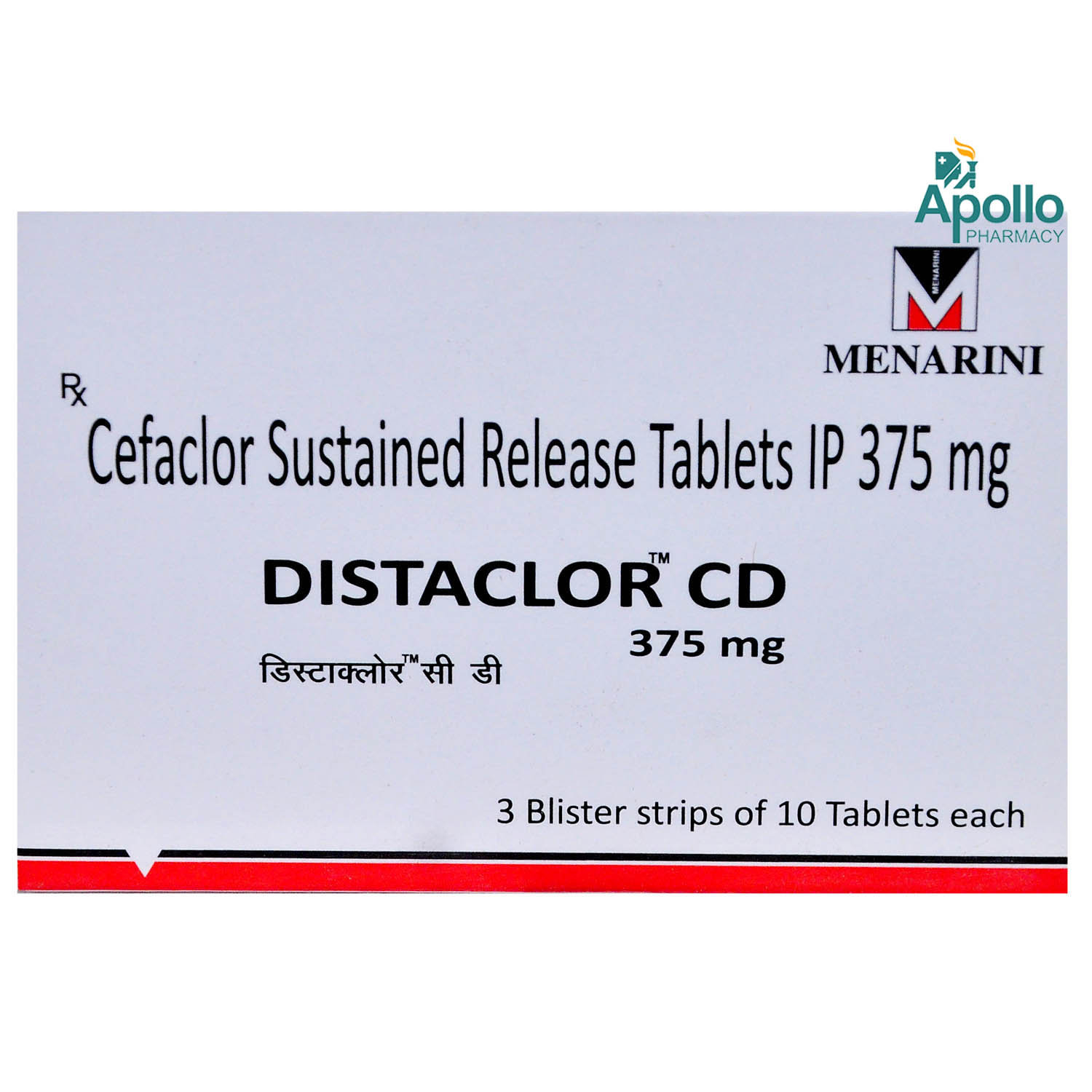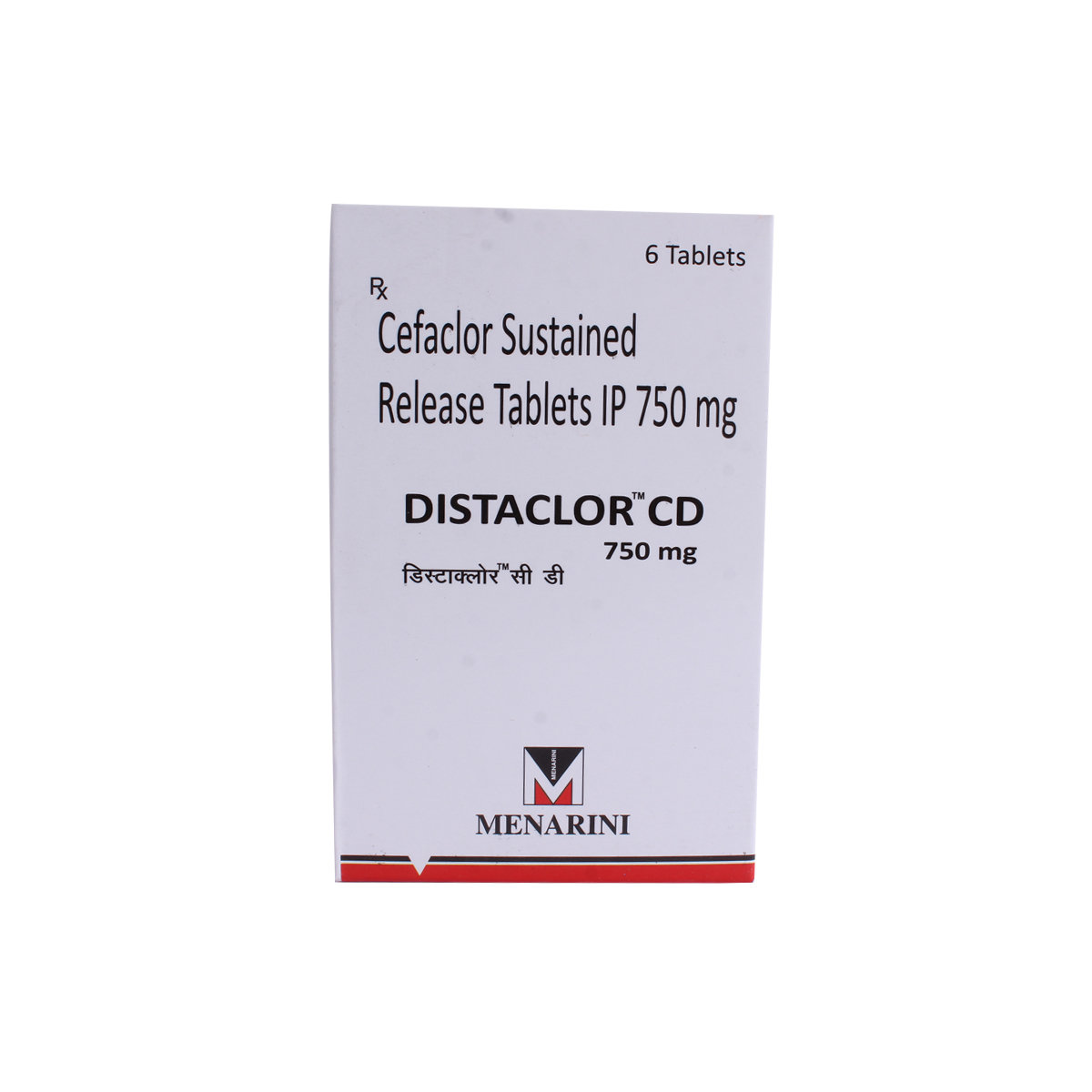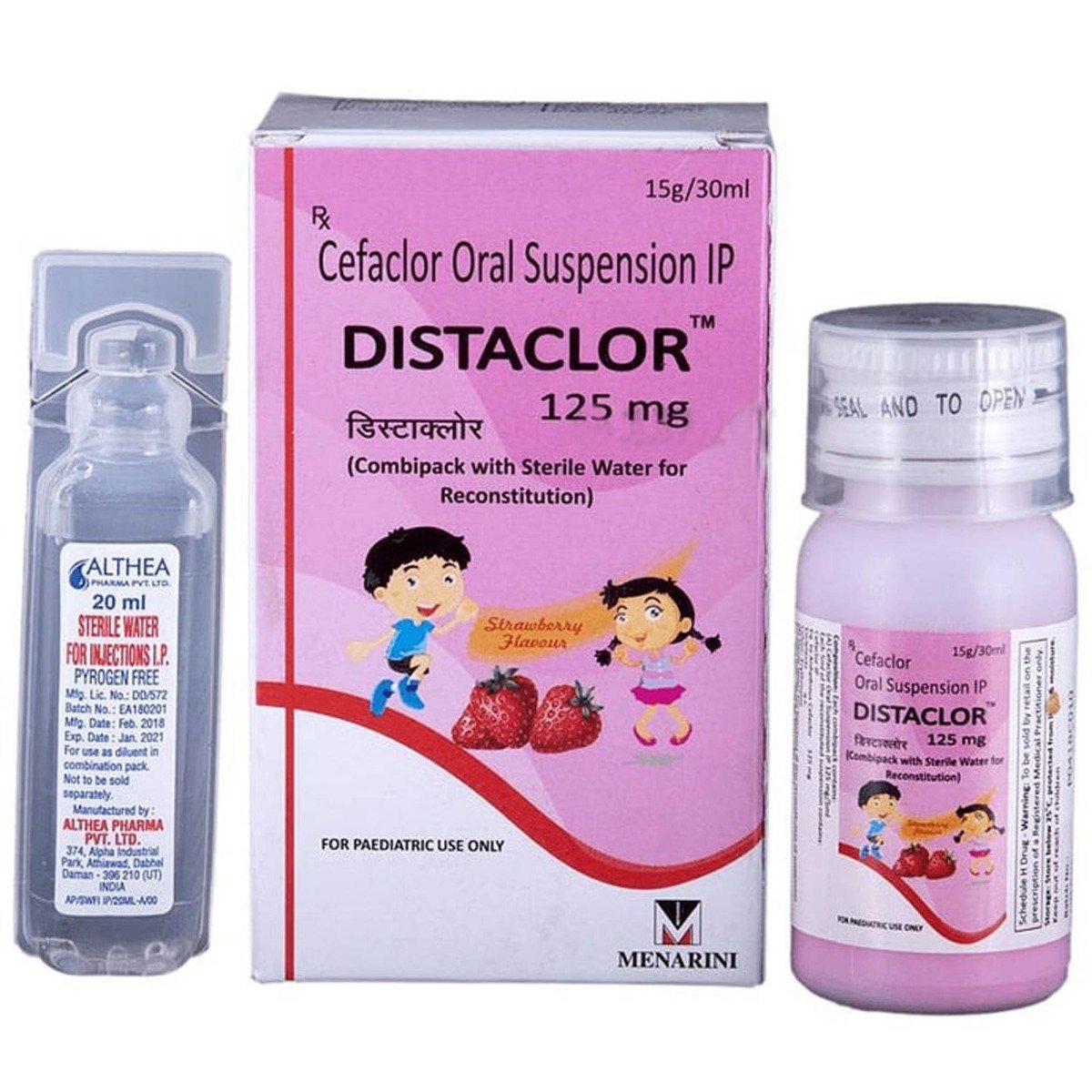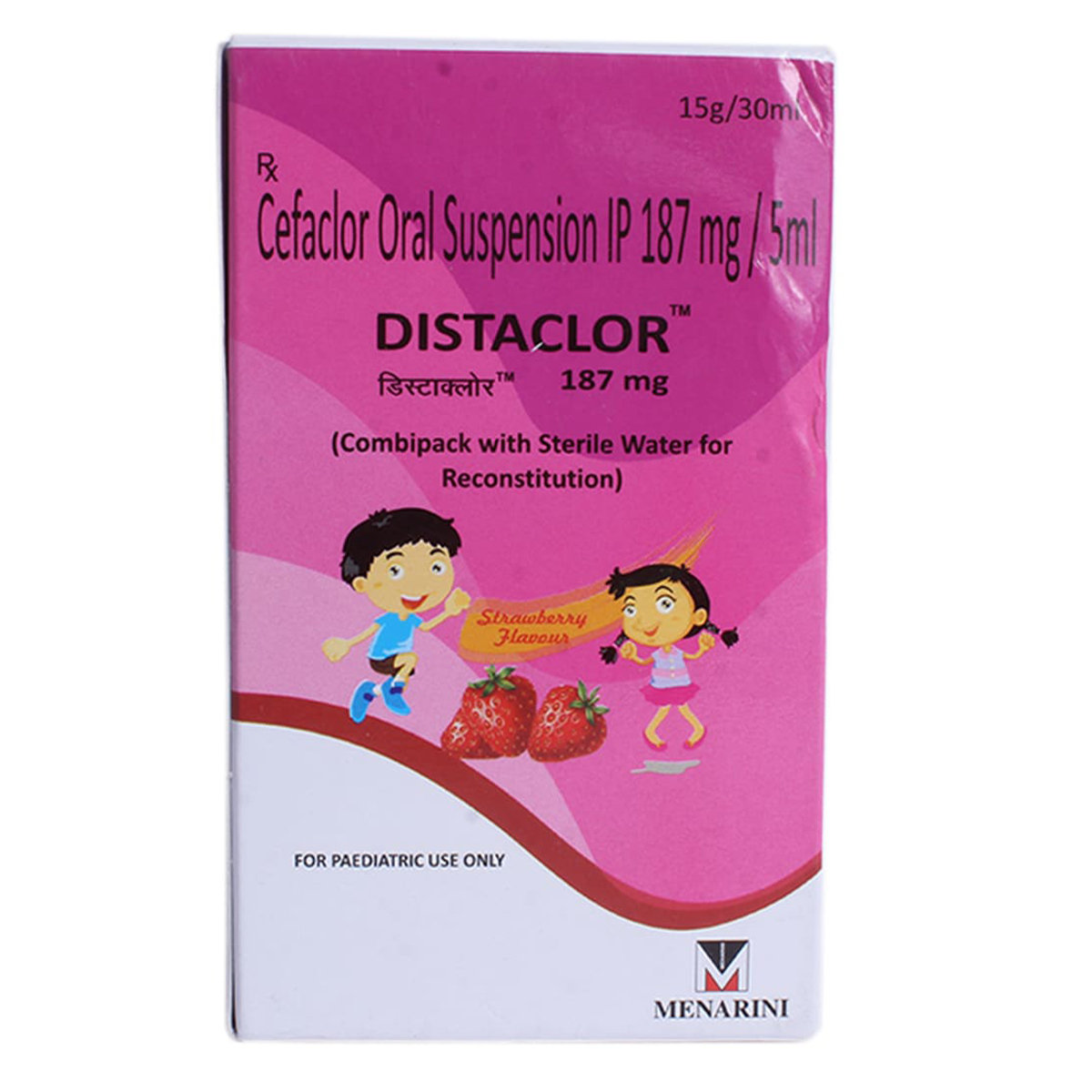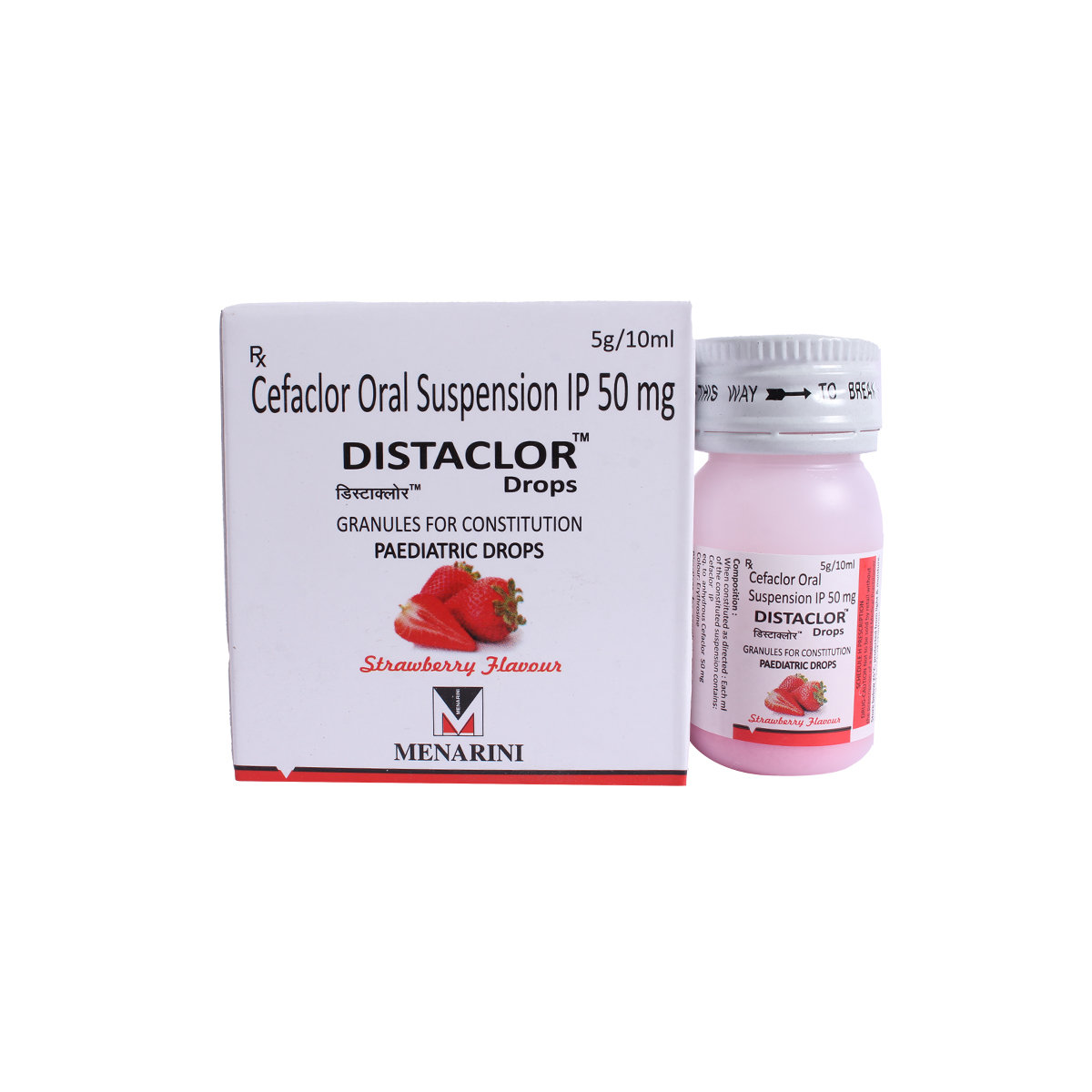Cefaclor
About Cefaclor
Cefaclor belongs to a class of drugs called antibiotics used to treat several bacterial infections of the urinary tract, respiratory tract, ears, nose, throat, skin and soft tissue. A bacterial infection is a condition in which harmful bacteria grow in the body and cause an infection. It can infect any part of the body and multiply very quickly. Cefaclor does not work against infections, flu or cold symptoms caused by the virus.
Cefaclor contains Cefaclor, an antibiotic that works by interfering with the formation of the bacterial cell wall (a protective covering) necessary for their survival. Thereby, it damages the bacterial cell wall and kills the bacterial cell. Thus, it prevents the growth of bacterial infection.
The dose and duration of Cefaclor can be determined by the doctor based on your medical condition. You may experience vomiting, nausea, diarrhoea, vaginal itching, fever, and rash in some cases. Most of these side effects of Cefaclor do not require medical attention and typically resolve on their own over time. However, if the side effects persist or worsen, please consult your doctor.
If you are allergic to Cefaclor, penicillins, or any other medications, please inform your doctor. If you are pregnant or breastfeeding, please inform your doctor before taking Cefaclor. Cefaclor in tablet form is not recommended for children, but syrup form may be used in children above 1 month only in doses as prescribed by a doctor. If you are on dialysis, inform your doctor before taking Cefaclor, and they will adjust the dose accordingly. Cefaclor may interact with certain tests, such as glucose (sugar) in urine, and give unusual results. Therefore, inform the doctor that you are using Cefaclor before undergoing any tests.
Uses of Cefaclor
• Treats urinary tract infections (UTIs): Cefaclor helps eliminate bacteria causing bladder and kidney infections.
• Manages respiratory tract infections: It is effective in treating pneumonia and bronchitis by killing the bacteria that cause these infections.
• Treats ear infections: It is used to treat conditions like otitis media to relieve pain and inflammation.
• Relieves nasal and sinus infections: It helps clear bacterial infections of the nose and sinuses.
• Treats throat infections: It acts effectively against pharyngitis and tonsillitis, reducing sore throat and swelling.
• Manages skin and soft tissue infections: It is useful in treating cellulitis, boils, and other bacterial skin conditions.
Medicinal Benefits
Cefaclor contains Cefaclor, a broad-spectrum antibiotic that acts against both aerobic (grow in the presence of oxygen) and anaerobic (grow in the absence of oxygen) gram-negative and gram-positive bacteria. It is used in the treatment of several bacterial infections of the urinary tract, respiratory tract, ears, nose, throat, skin, and soft tissue. Cefaclor interferes with the formation of the bacterial cell wall (a protective covering) necessary for their survival. Thereby, it damages the bacterial cell wall and kills the bacteria.
Directions for Use
- Cefaclor can be taken with or without food, as advised by your doctor.
- Follow your doctor's instructions on the dosage and timing of this medication to ensure safety.
- Swallow Cefaclor as a whole with a glass of water.
- Do not crush, break, or chew it.
Storage
Side Effects of Cefaclor
- Nausea
- Vomiting
- Diarrhoea
- Vaginal itching
- Fever
- Rash
Drug Warnings
If you are allergic to Cefaclor, penicillins, or any other medications, please inform your doctor. If you have kidney problems, diabetes, or a stomach or intestinal disorder, such as inflammation of the large intestine, tell your doctor before taking Cefaclor. If you are pregnant or breastfeeding, please inform your doctor before taking Cefaclor. Cefaclor in tablet form is not recommended for children, but syrup form may be used in children above 1 month only in doses as prescribed by a doctor. If you are on dialysis, inform your doctor before taking Cefaclor so that the dose may be reduced accordingly. Cefaclor may interact with certain tests, such as glucose (sugar) in urine, and give unusual results. Therefore, inform the doctor that you are using Cefaclor before undergoing any tests. You are recommended to complete the full course of Cefaclor as prescribed by your doctor for effective results.
Drug Interactions
Drug-Drug Interaction: Cefaclor may interact with blood thinners (such as warfarin) and gout medications (such as probenecid).
Drug-Food Interaction: No interactions found.
Drug-Disease Interaction: If you have kidney problems, diabetes, stomach or intestinal disorders such as inflammation of the large intestine, inform your doctor before taking Cefaclor.
Drug-Drug Interactions Checker List:
Safety Advice

Alcohol
cautionAvoid consumption of alcohol with Cefaclor as it may increase the risk of adverse effects.

Pregnancy
cautionCefaclor is a category B pregnancy drug and is given to pregnant women only if the doctor thinks the benefits outweigh the risks. Please consult a doctor if you are pregnant or planning to become pregnant.

Breast Feeding
consult your doctorCefaclor may be excreted in small amounts into breast milk. It should be used during breastfeeding only if clearly recommended by your doctor, after carefully assessing the potential benefits and risks.

Driving
safeCefaclor usually does not affect your ability to drive or operate machinery.

Liver
cautionTake Cefaclor with caution, especially if you have a history of Liver diseases/conditions. The dose may be adjusted by your doctor as required.

Kidney
cautionTake Cefaclor with caution, especially if you have a history of Kidney diseases/conditions. The dose may be adjusted by your doctor as required.

Children
cautionCefaclor is not recommended for children. Please consult the doctor if you have any concerns regarding this.
Habit Forming
Diet & Lifestyle Advise
- Take probiotics after completing the full course of Cefaclor to restore some healthy bacteria in the intestines that may have been killed. Taking probiotics after antibiotic treatment can reduce the risk of antibiotic-associated diarrhoea. Certain fermented foods like cheese, yogurt, kombucha, sauerkraut, and kimchi can restore the good bacteria of the intestine.
- Include fibre-rich foods, as they can be easily digested by your gut bacteria, which helps stimulate their growth. Thus, fibre-rich foods may help restore healthy gut bacteria after a course of antibiotics. Whole grains such as whole-grain bread and brown rice should be included in your diet.
- Make sure you drink plenty of water or other fluids every day while you are taking Cefaclor.
- Avoid alcohol consumption as it may increase adverse effects.
Special Advise
If you are about to undergo blood or urine tests, please inform your doctor that you are taking Cefaclor, as it may interfere with the results of these tests.
Patients Concern
Disease/Condition Glossary
Bacterial infection: It is a condition in which harmful bacteria grow in the body and cause infection. It can target any part of the body and multiply very quickly. Bacteria come in three basic shapes, namely spherical, rod-shaped, or spiral-shaped. Bacteria may be gram-positive (have thick cell walls) or gram-negative (do not have cell walls). Appropriate tests are done to identify bacterial strains, and based on the results, proper medication is prescribed. Some common symptoms of bacterial infection include cough, fever, and tiredness.
FAQs
Cefaclor belongs to the class of antibiotics. It is used to treat several bacterial infections of the urinary tract, respiratory tract, ears, nose, throat, skin and soft tissue.
Cefaclor contains Cefaclor, an antibiotic that works by interfering with the formation of the bacterial cell wall (a protective covering) that is necessary for their survival. Thereby, it damages the bacterial cell wall and kills bacteria.
Yes, Cefaclor may be used to treat a lung infection caused by bacteria. Cefaclor is an antibiotic that kills bacteria and prevents the spread of infection.
Cefaclor may cause diarrhoea as a common side effect. However, if the condition persists, worsens, or if you notice blood or mucus in stools, avoid taking Cefaclor and consult a doctor immediately.
Cefaclor should be used with caution in patients receiving dialysis (process of filtration and purification of blood using a machine). Therefore, if you are receiving dialysis, please inform your doctor before taking Cefaclor so that the dose may be adjusted accordingly.
You are not recommended to take Cefaclor with warfarin as co-administration of these two medicines may increase the risk of bleeding more easily. However, please consult your doctor before taking Cefaclor with other drugs.
No, Cefaclor is not used to treat viral infections. Cefaclor is an antibiotic which is used to treat only bacterial infections.
You are not recommended to stop taking Cefaclor without consulting your doctor, as it may worsen the infection or cause recurring symptoms. Therefore, take Cefaclor for as long as your doctor has prescribed it. If you experience any difficulty while taking Cefaclor, please consult your doctor.





